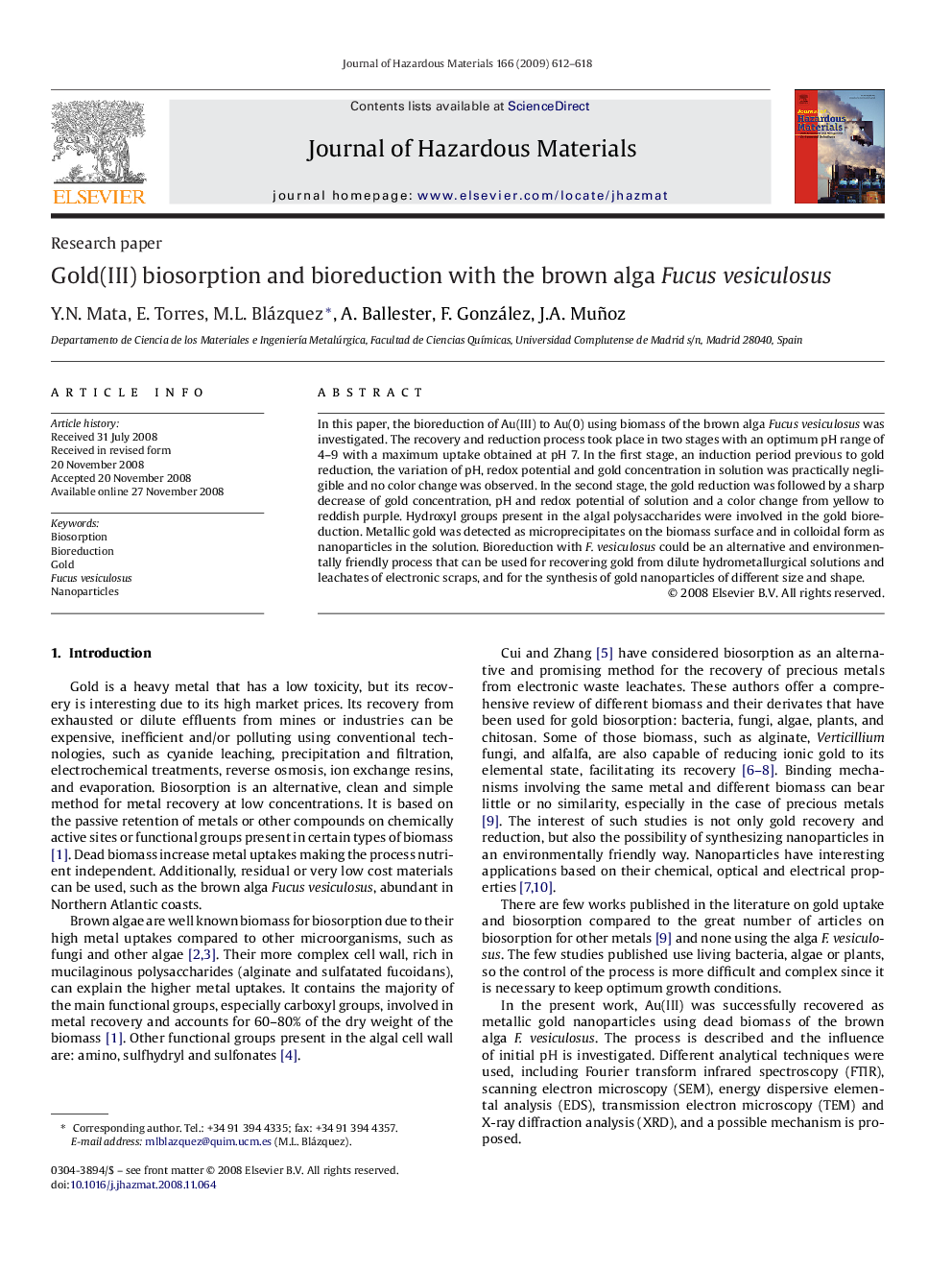| Article ID | Journal | Published Year | Pages | File Type |
|---|---|---|---|---|
| 581987 | Journal of Hazardous Materials | 2009 | 7 Pages |
Abstract
In this paper, the bioreduction of Au(III) to Au(0) using biomass of the brown alga Fucus vesiculosus was investigated. The recovery and reduction process took place in two stages with an optimum pH range of 4-9 with a maximum uptake obtained at pH 7. In the first stage, an induction period previous to gold reduction, the variation of pH, redox potential and gold concentration in solution was practically negligible and no color change was observed. In the second stage, the gold reduction was followed by a sharp decrease of gold concentration, pH and redox potential of solution and a color change from yellow to reddish purple. Hydroxyl groups present in the algal polysaccharides were involved in the gold bioreduction. Metallic gold was detected as microprecipitates on the biomass surface and in colloidal form as nanoparticles in the solution. Bioreduction with F. vesiculosus could be an alternative and environmentally friendly process that can be used for recovering gold from dilute hydrometallurgical solutions and leachates of electronic scraps, and for the synthesis of gold nanoparticles of different size and shape.
Related Topics
Physical Sciences and Engineering
Chemical Engineering
Chemical Health and Safety
Authors
Y.N. Mata, E. Torres, M.L. Blázquez, A. Ballester, F. González, J.A. Muñoz,
